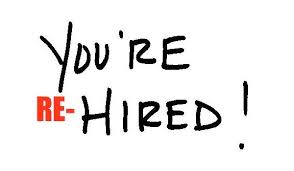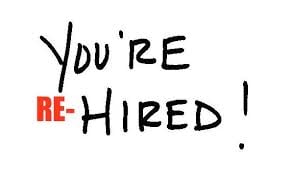Social Security
Identifying optimal ways to claim Social Security is essential to your retirement income planning. For many retirees, understanding and claiming Social Security can be difficult. Social Security benefits are not designed to be the sole source of your retirement income, but rather a part of your overall withdrawal strategy. Knowing the foundation of Social Security and using this knowledge to your ad-vantage can help you claim your maximum benefit.
It is your responsibility to enroll in Medicare parts A and B when you first become eligible — and you must stay enrolled to have coverage for Medicare-eligible expenses. This applies to your Medicare eligible dependents as well.
You should know how your retiree medical plan choices or Medicare eligibility impact your plan options. Before you retire, contact the U.S. Social Security Administration directly at (800) 772-1213, call your local Social Security Office or visit ssa.gov. They can help determine your eligibility, get you and/or your eligible dependents enrolled in Medicare or provide you with other government program information.
Next Step:
Check the status of your Social Security benefits before you retire. Contact the U.S. Social Security Administration by calling 800-772-1213. You can also call your local Social Security office or visit ssa.gov.
Sponsored Ad
Medicare
Articles you may find interesting:
- Corporate Employees: 8 Factors When Choosing a Mutual Fund
- Use of Escrow Accounts: Divorce
- Medicare Open Enrollment for Corporate Employees: Cost Changes in 2024!
- Stages of Retirement for Corporate Employees
- 7 Things to Consider Before Leaving Your Company
- How Are Workers Impacted by Inflation & Rising Interest Rates?
- Lump-Sum vs Annuity and Rising Interest Rates
- Internal Revenue Code Section 409A (Governing Nonqualified Deferred Compensation Plans)
- Corporate Employees: Do NOT Believe These 6 Retirement Myths!
- 401K, Social Security, Pension – How to Maximize Your Options
- Have You Looked at Your 401(k) Plan Recently?
- 11 Questions You Should Ask Yourself When Planning for Retirement
- Worst Month of Layoffs In Over a Year!
- Corporate Employees: 8 Factors When Choosing a Mutual Fund
- Use of Escrow Accounts: Divorce
- Medicare Open Enrollment for Corporate Employees: Cost Changes in 2024!
- Stages of Retirement for Corporate Employees
- 7 Things to Consider Before Leaving Your Company
- How Are Workers Impacted by Inflation & Rising Interest Rates?
- Lump-Sum vs Annuity and Rising Interest Rates
- Internal Revenue Code Section 409A (Governing Nonqualified Deferred Compensation Plans)
- Corporate Employees: Do NOT Believe These 6 Retirement Myths!
- 401K, Social Security, Pension – How to Maximize Your Options
- Have You Looked at Your 401(k) Plan Recently?
- 11 Questions You Should Ask Yourself When Planning for Retirement
- Worst Month of Layoffs In Over a Year!
If you or your dependents are currently or will become eligible for Medicare after you leave Halliburton, Medicare generally becomes the primary coverage for you or any of your dependents as soon as the individual becomes eligible for Medicare. This will affect your company-provided medical benefits. You and your Medicare-eligible dependents must enroll in Medicare Parts A and B when you first become eligible. Medical and MH/SA benefits payable under the company-sponsored plan will be reduced by the amounts Medicare Parts A and B would have paid whether you actually enroll in them or not. For details on coordination of benefits, refer to your summary plan description (SPD)(2).
If you or your eligible dependent do not enroll in Medicare Parts A and B, your provider can bill you for the amounts that are not paid by Medicare or your Halliburton medical plan, making your out-of-pocket expenses significantly higher.
According to the Employee Benefit Research Institute (EBRI), Medicare will only cover about 60% of an individual’s medical expenses. This means a 65-year-old couple with prescription-drug expenses at the midpoint of their peers will need $259,000 in savings to have a 90% chance of covering their healthcare expenses. A single male will need $124,000 and a single female, thanks to her longer life expectancy, will need $140,000.
Next Step:
Get Medicare prescription drug information by visiting medicare.gov.
Check your SPD Summary(2) to see if you're eligilble to enroll in Medicare Parts A and B (2). If you become Medicare eligible for reasons other than age, you must contact the Halliburton Benefits Center about your status.
What are the main eligibility criteria for employees under the Halliburton Retirement Plan, and how have these criteria evolved since the plan was frozen to new participants after December 31, 1996? In what ways do these eligibility requirements impact current and future Halliburton employees?
Eligibility Criteria: The Halliburton Retirement Plan was frozen to new participants after December 31, 1996. Employees who were active participants and at least 55 years old by that date remain eligible under the plan. The eligibility criteria have remained largely unchanged for these participants, affecting current employees by limiting new enrollments, which can reduce the overall scope of retirement benefits offered to newer hires(Halliburton_2_27_2015_H…).
How does the funding mechanism of the Halliburton Retirement and Savings Plan impact the retirement benefits provided to employees? Discuss the actuarially determined contribution method and how it aligns with IRS regulations for pension plans in 2024.
Funding Mechanism: The Halliburton Retirement and Savings Plan uses an actuarially determined contribution method to fund retirement benefits, ensuring that the plan is in line with IRS regulations. This approach calculates contributions based on the plan’s liabilities and participants' service, helping maintain the financial health of the plan in 2024 by adjusting employer contributions as needed to meet legal obligations(Halliburton_2_27_2015_H…).
In the context of the Halliburton Retirement Plan, what options do employees have for distribution upon reaching retirement age or in the event of early retirement? Elaborate on the various distribution forms available, such as lump-sum payouts and annuities, and how these options are designed to support employees’ financial needs after retirement.
Distribution Options: Halliburton employees have various distribution options upon reaching retirement age, including lump-sum payouts and annuities. These options are designed to cater to diverse financial needs, with employees being able to choose between a one-time lump sum or recurring payments in the form of annuities for greater financial stability post-retirement(Halliburton_2_27_2015_H…).
What are the implications of excluding certain employee groups (e.g., union members, non-resident aliens) from the Halliburton Retirement Plan on the workforce's overall retirement security? Assess how this could affect Halliburton's ability to attract and retain diverse talent in the company.
Exclusion of Employee Groups: The Halliburton Retirement Plan excludes union members, non-resident aliens, and leased contractors from participation, which can impact the overall retirement security of these groups. This exclusion might limit Halliburton's ability to attract a more diverse workforce, as retirement benefits are a key factor in talent retention(Halliburton_2_27_2015_H…).
How can Halliburton employees access their retirement plan benefits, and what steps do they need to take to initiate a distribution request? Provide a detailed explanation of the distribution request process as outlined in the Halliburton Retirement Plan documentation.
Accessing Retirement Benefits: To access their retirement benefits, Halliburton employees must contact the Halliburton Benefits Center at the provided phone number. The distribution request process involves completing specific forms and complying with eligibility requirements to initiate benefit disbursement(Halliburton_2_27_2015_H…).
Considering changes in the economy and retirement landscape, how does Halliburton's approach to retirement benefits compare to industry standards? Analyze the strengths and weaknesses of Halliburton's retirement offerings relative to competitors in the same market segment.
Industry Comparison: Halliburton's retirement offerings, including a defined benefit plan, are competitive but limited due to the freezing of new participants after 1996. This places the company slightly behind competitors that offer more flexible or modern retirement plans, although its pension benefits remain a strong feature for eligible long-term employees(Halliburton_2_27_2015_H…).
How is the financial health of the Halliburton Retirement Plan monitored, and what measures are in place to ensure that the plan remains funded adequately to meet the obligations to its participants? Delve into the regulatory requirements that Halliburton must adhere to, including any recent updates to the IRS regulations in 2024.
Monitoring Financial Health: Halliburton monitors the financial health of its retirement plan through regular actuarial reviews to ensure that it remains adequately funded. The company adheres to IRS regulations and uses plan assets to cover necessary expenses, ensuring the plan can meet obligations to participants(Halliburton_2_27_2015_H…).
What role do Halliburton employees play in influencing the future of the retirement plan? Discuss any avenues available for employees to provide feedback or suggestions regarding changes to the retirement plan offerings or structure.
Employee Influence: While Halliburton employees may not directly influence retirement plan policy changes, they can provide feedback through the Benefits Center. However, changes to frozen plans are rare, so employee input may have limited impact on restructuring or reopening the plan(Halliburton_2_27_2015_H…).
What specific resources does Halliburton offer to employees for learning about and planning their retirement, and how can they be leveraged effectively? Discuss the importance of these resources in helping employees make informed decisions about their retirement.
Retirement Resources: Halliburton offers resources such as retirement planning tools and access to benefits counselors to help employees make informed decisions about their retirement. These resources are crucial in helping employees understand their retirement options and optimize their benefits(Halliburton_2_27_2015_H…).
How can employees at Halliburton contact the company to learn more about the retirement plan and its provisions? What specific contact methods or resources are available for employees seeking further information or assistance regarding their retirement benefits?
Contacting Halliburton: Employees seeking more information about their retirement benefits can contact the Halliburton Benefits Center directly. This service provides guidance on plan details, distribution options, and general retirement inquiries, ensuring employees have access to the assistance they need(Halliburton_2_27_2015_H…).
/General/General%203.png?width=1280&height=853&name=General%203.png)



-2.png?width=300&height=200&name=office-builing-main-lobby%20(52)-2.png)









.webp?width=300&height=200&name=office-builing-main-lobby%20(27).webp)


-2.png)









.webp)